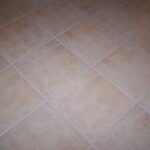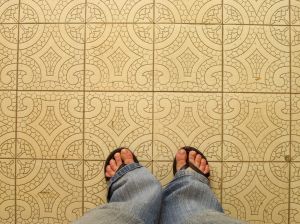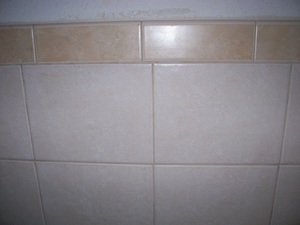Heated floors are becoming very popular these days as people search for ways to keep their houses at a more comfortable temperature without going to the expense of replacing their current heating systems. They are also great for those older houses where the rooms were added on to an already existing structure but heat was not channeled to the room. Our house is one of those, the bathroom was added on sometime after the house was built and although heat was vented to it, it was set over an unheated crawl space and as such the floor is very cold. What we decided to do was add an under tile heated floor system. These are the steps it will take to replace the old floor with a new heated tile floor system, realizing that the tiles themselves are not heated but the heater actually goes beneath the tiles.
·. Now is the time to fix any weak spots or problem areas. When you are satisfied that all is well, sweep the area and make sure that it is very clean. Now you are ready to move on to the next step.
· There are several options when it comes to under tile heating ranging from heated mats to heating coils. The heated mats are generally made up of a heating wire laced into a rubber mat. This mat usually comes in standard sizes and shapes and will cover most, but not all of the floor area. These mats can be used with any floor covering, including carpet. The other more common style is the heated coil system which consists of a length of insulated wire attached to a thermostat and then run throughout the floor area giving wider coverage.
· For our installation we chose to go with the heated coil as it was less expensive and more versatile. We started out with a linoleum floor so for removal all we needed was a stout pair of gloves, a heat gun and a couple of good putty knives. Using the heat gun softens the glue holding the linoleum and makes the old linoleum more flexible, reducing cracking and breakage. You might wonder why we would worry about this, but trust me it makes removal so much easier.
· With the old linoleum out of the way we looked at the floor surface and decided all it needed was a good sanding to smooth it out after the old glue had been scraped off. So now we have a nice smooth and swept clean starting surface on which to lay our heating coil.
· Most of the heating coil kits will come with everything you need to install your new floor, including the coil connecting wires and a thermostat as well as the means to attach it to the floor. Ours came with a roll of heat coil, thermostat and a roll of metal strapping to hold the coil to the floor. We laid the coil in a serpentine pattern making sure to get the best coverage we could, bearing in mind that the coil cannot go over itself nor can it be cut. The thermostat was placed in a convenient location on the wall and the wires hooked up.
· We decided to use a floor leveling product that is similar to cement to cover the floor before tiling, partly to protect our coils and partly to level the floor. This product is mixed with water and then spread with a trowel to smooth it out. We used a 3 foot level to help insure that the floor would be level when we were done.
· After allowing this to completely dry, which took two days, we were ready to install our tile floor. Tile cement was laid out using a serrated trowel for maximum adhesion and tiles were laid out in the pattern we had chosen. Following this up with grouting the tiles and then a good cleanup we had a nice warm floor in our previously cold bathroom.
· The only tools we needed for this project were a good pair of gloves, a hammer, putty knife wire cutters, screwdriver, a 3 foot level mounted on a piece of 2×4 to extend the length, trowel and something to mix the floor leveling compound in.
· Overall time involved was three days due to the need for the floor leveling compound to dry, but actual work time was 2 days. Not more than 6 or 7 hrs per day.
This was not a difficult job and can be completed with only a minimum skill level. The hardest part was leveling the floor and then installing the tiles. A note of caution, be sure that the power breaker is turned off before you connect anything to it. Also make sure that you use a multimeter set to check continuity through the coil before sealing it in as once it is sealed and covered it would be a large project to replace it.
I found the following web sites useful for information and tips on this installation:
www.renovationexperts.com
www.hammerzone.com
www.warmyourfloor.reachlocal.net



